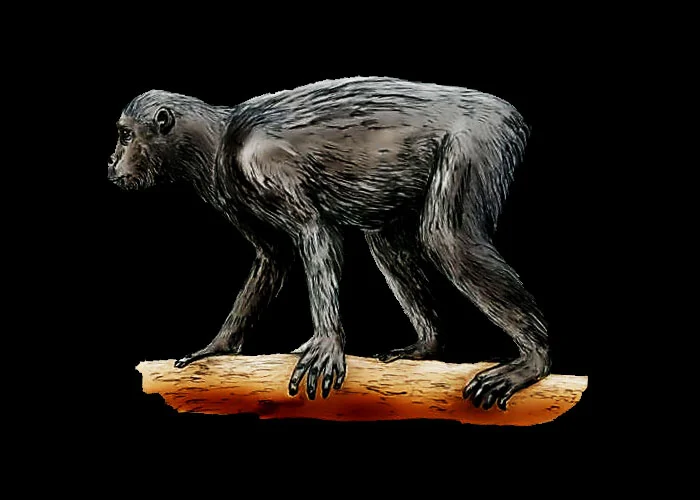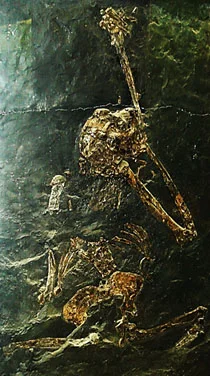Dryopithecus brancoi cranium and mandible – Wiki Commons
A team of palaeontologists have found evidence linking a fossil primate to modern day hominoids (known colloquially as apes).
Between 1999 and 2002, a team of palaeontologists excavated the remains of an early primate in strata dating to about 15 million years of age from the site of Nachola, Kenya, eastern Africa. The remains were attributed to the species Nacholapithecus kerioi, a species that lived in the Middle Miocene.
The scientific findings were discussed in a paper published in the Journal of Human Evolution entitled:
The paper focuses upon the vertebrae of this species, in particular the cervical bones. This anatomical structure is composed of seven individual bones, labelled C1 to C7. The atlas (C1), the axis (C2) and the seventh bone (C7) have features which distinguishes them from C3-C6.
Together these elements are found in the neck of humans, creating a curve before entering the cranium.
A wide range of hominoid backbones have been analysed over the past four decades. Below is a list of species, whose vertebrae have been studied:
Proconsul heseloni
Morotopithecus bishop
Equatorius africanus
Pliopithecus vindobonensis
Oreopithecus namibiensis
Hispanopithecus laietanus
Pierolapithecus catalaunicus
Nacholapithecus kerioi
Thirteen fossil cervical vertebrae of Nacholapithecus kerioi were analysed and discussed, while the cervical vertebrae of the modern day Yellow Baboon (Papio cynocephalus) were employed for comparative purposes.

Nacholapithecus kerioi was adapted to climbing since the long and cranially angled clavicle shared morphological similarities with the orangutan. Compared with Papio cynocephalus, the cervical vertebrae were smaller and less robust than Nacholapithecus kerioi, suggesting that the latter required large muscles interconnecting the arms, cranium and neck, supporting an active lifestyle in the trees more so than the yellow baboon. A feature

called the olecranon fossa is well developed at the humeroulnar joint, setting it apart from earlier species of hominoid. This joint suggests that it also possessed a wide variety of arboreal locomotion methods. The size of the spinal cord that ran through the vertebrae of this species is inferred to be quite large, but relatively the same as that exhibited in P. cynocephalus. Research has shown that species with large vertebral foramina have relatively large forelimbs.
Another team of scientists found that for more orthograde quadrupedal primates feature thinner anterior and posterior arch, more ventrally and caudally oriented transverse process along with the more laterally rounded and inclined superior articular facets (Manfreda et al., 2006). A characteristic somewhat featured in the 13 vertebrae here described. The features of Nacholapithecus suggest that this species did not travel pronogradally (walking quadrupedally with the long axis of the body parallel to the ground) but in a more orthograde fashion.
Bibliography
Manfreda, E., Mitteroecker, P., Bookstein, R.L., Schaefer, K., 2006. Functional morphology of the first cervical vertebra in humans and nonhuman primates. Anat. Rec. B New Anat. 289, 184e194.




